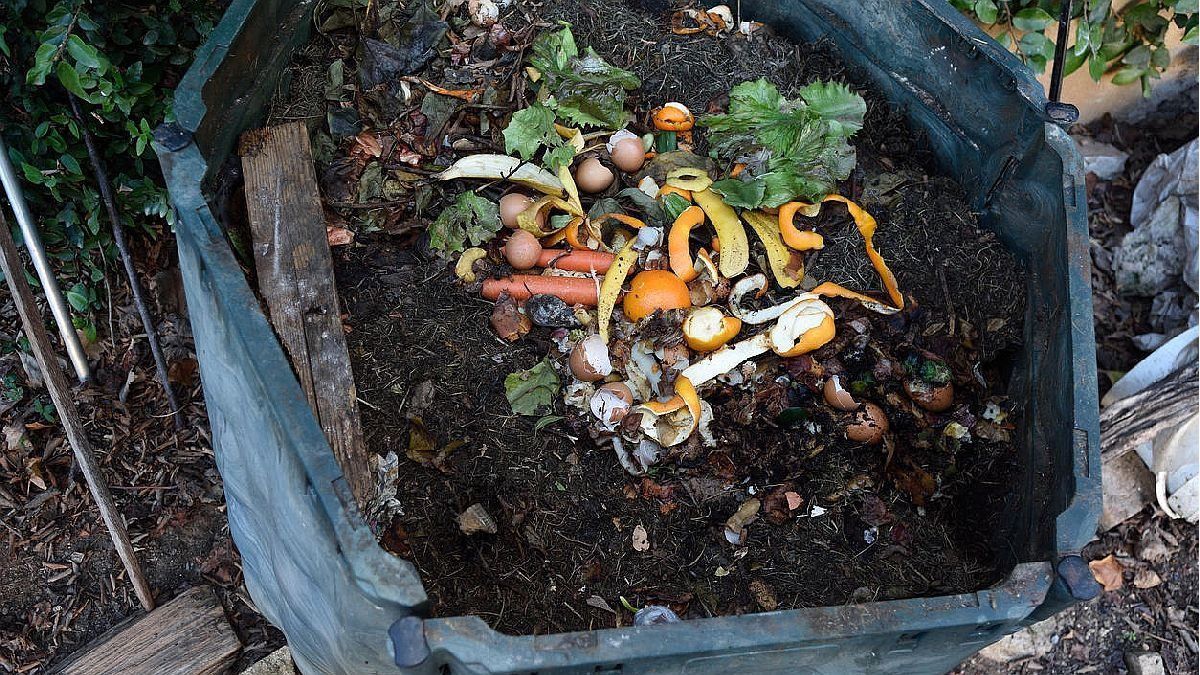By composting we reduce the generation of waste from our homes by up to 40%. With this, we help reduce greenhouse gas emissions and prevent the contamination of soil, bodies of water and even the air. In addition, we recycle soil nutrients, preventing their erosion and degradation. And, no less important, it is an activity that allows us to connect with nature. It doesn’t take too long, it has many benefits and, contrary to what many think, it’s super easy!
However, it is common for us to find different obstacles or fears when making the decision to start composting. By following some basic tips we can avoid bad odours, control unwanted insect populations and save a lot of time on the way to incorporating the composting habit.
We can do it directly on the ground, if we have a garden, or opt for a container, where we will have to make a little more effort to copy nature, but in small spaces it is a very good option. There are plenty of businesses that sell them, but you can also encourage yourself to build your own compost bin. The important thing is to take into account how much space we have, how many people live in my house (for 1 or 2 people, one of 40 liters or more is fine, and for 3 or 4, one of 60 liters or more will be better) , and that the design is not airtight. Although we need the compost bin to have a lid because we have children or pets or because it will be very exposed to rain, it is important that it is not hermetically sealed to allow oxygen to enter the mixture.
- Where do I put my compost bin?
In general terms, we are going to look for a place, either inside or outside our houses, that is in the shade most of the day, protected from the direct ray of the Sun; as far as possible, it should be a covered place, sheltered from the rain; and ideally it should be safe from very strong winds, to prevent moisture loss and cooling. In very cold areas, it should be exposed more to the Sun, and in very hot climates it is better to keep it well in the shade.
- Know what materials can be incorporated
We are going to add moist or “green” material to the compost and dry or “brown” material, more or less in equal parts, trying to maintain an optimal moisture balance. The wet ones can be the remains of fruits and vegetables, tea bags, coffee remains, weed or pruning remains. Among the dry we can mention dry leaves, paper and cardboard, eggshells, matches and wood chips, for example. What we should never incorporate are meat, dairy products, baked goods, traces of fats or oils and other materials such as plastics, metals and glass.
- In what condition do the materials have to be in order to incorporate them into my compost?
Everything has to be as chunky as possible. When the materials are smaller, the exposed surface is greater, so it degrades faster. The ideal size is up to 3 cm.
Regarding the wet residues, it does not matter if they are “rotten” or we see that they have a little fungus. It is even usually better, since they provide bacteria and fungi that will help in the degradation process.
Home composting.jpg
- Follow the lasagna method
Every time we add wet material, we are going to add a similar portion of dry material, stir and put a layer of dry material on top to avoid the appearance of mosquitoes and other unwanted insects that appear when the compost is very exposed.
- The transition patch
It is practical to have a small bin handy in the kitchen to put the organic waste that is generated. Composting is a process that progresses “dark phase”. Every time we open the compost bin, light enters, harms the microorganisms that are working and the process is interrupted. If we go to the trouble of pre-assembling these materials and incorporating them all together, we allow you these days of continuous processing. If we are composting in a container, it is also advisable to keep a stock of dry material for when we need it.
These are the liquids that come out as a result of the degradation of organic matter. Ideally, your compost bin has a drawer or some type of container that retains leachate. To use it as a plant fertilizer, dilute 1 part leachate in 10 parts water (preferably non-chlorinated).
- Add worms to speed up the process
Although they are not necessary, the red worm or Californian red worm is ideal for compost. You can consume the equivalent of your weight per day and eliminate half as humus. In addition, it gets along very well with other microorganisms and they multiply around them, accelerating decomposition times several times.
Without them, there is no compost. It is important to remember that the compost bin is and should be an ecosystem. If the material that we incorporate is varied, and we control the humidity and aeration of our compost, we should not have problems with insects or odors.
- How do I know when my compost is ready?
We say that the compost is ready when the decomposed material becomes a fine granules and is chocolate or brown in color. It is very uniform, we cannot distinguish the remains that we were putting in the compost bin. It smells of moist and fresh earth. And if we touch it or bring our hand closer, it has a rather cold temperature, because there is no degradation process generating heat.
By following these recommendations and dedicating a little time about twice a week to add the right material, remove and control the most important parameters, after 3 months you can obtain high-quality fertilizer for your plants, those of your friends and family or your community. .
Graduated in environmental management, specialist in sustainability and consultant B (@unaovejaverde)
Source: Ambito
David William is a talented author who has made a name for himself in the world of writing. He is a professional author who writes on a wide range of topics, from general interest to opinion news. David is currently working as a writer at 24 hours worlds where he brings his unique perspective and in-depth research to his articles, making them both informative and engaging.




